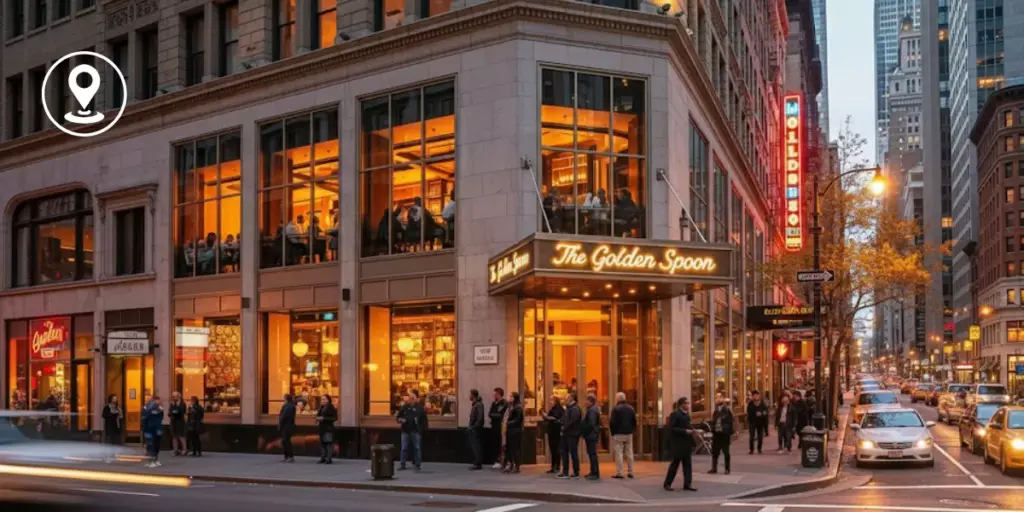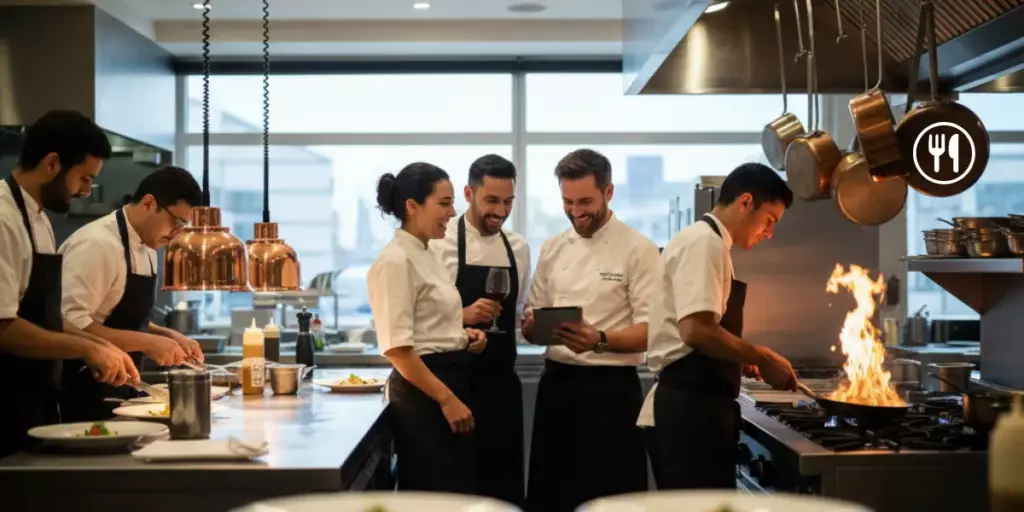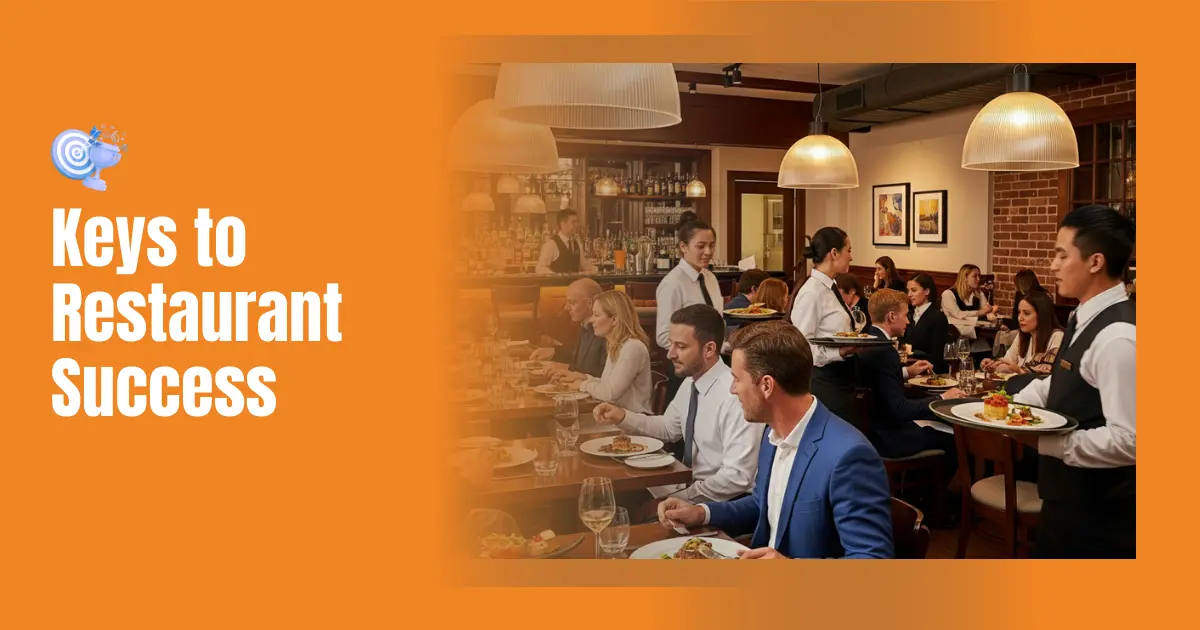Running a restaurant is one of the most rewarding yet challenging ventures. The reality is sobering: around 26% of restaurants fail in the first year, according to a study at Cornell. Success in this industry is not just about serving great food, it’s about managing operations, finances, people, and customer experiences while keeping pace with technology and compliance requirements.
If you’ve ever wondered how to run a restaurant efficiently and sustainably, this guide lays out 12 proven strategies, complete with real-world statistics and actionable tips for running a successful restaurant.
1. Define Your USP and Identity
In today’s crowded dining landscape, having a clear Unique Selling Proposition (USP) is crucial if you want to learn how to run a restaurant successfully. Without it, your business risks blending in as “just another restaurant.”
Why it matters:
Research shows that when a restaurant offers something unique, it boosts consumers’ sense of authenticity and increases the likelihood that they’ll choose it over competitors.
Examples:
- Farm-to-table freshness with local sourcing.
- Creative fusion menus that stand out.
- Fastest delivery in your area.
- A memorable ambience that enhances the dining experience.
Actionable tips:
- Develop a signature dish that customers can’t find elsewhere.
- Maintain consistency across your branding, décor, and service.
- Craft a compelling brand story that emotionally connects with diners.
2. Location: The Make-or-Break Factor

Choosing the right location is one of the most important decisions when learning how to run a restaurant successfully. The wrong spot can limit visibility and customer flow, while the right one sets the foundation for steady growth.
Why it matters:
Location influences accessibility, operating costs, and your ability to attract your target diners. A prime spot can bring natural footfall, while a poor choice can force you to overspend on marketing just to stay visible.
Examples:
- High-traffic neighbourhoods near offices, colleges, or malls.
- Accessible sites with parking and public transport connectivity.
- Alternate models like ghost kitchens, cloud kitchens, and food trucks that reduce fixed overheads while tapping into delivery-first audiences.
Actionable tips:
- Analyse local demographics to ensure the area matches your restaurant’s concept.
- Compare prime real estate vs. affordable rent to strike a sustainable balance.
- Use Google Maps and competitor heat maps to identify high-demand dining zones.
- For those exploring how to run a restaurant efficiently, test smaller-scale formats like food trucks before committing to long leases.
3. Cost Optimisation: Protecting Your Margins
Restaurants typically operate on razor-thin profit margins of 3–10%, an article by BlueCart notes. This means every inefficiency can eat into your bottom line. Cost control is one of the most important things you need to run a restaurant successfully.
Why it matters:
Without disciplined expense management, even popular restaurants can collapse under financial strain.
Examples:
- Food wastage due to over-purchasing or poor inventory management.
- Low-margin menu items are dragging down profitability.
- Supplier costs that rise without negotiation or oversight.
Actionable tips:
- Optimise your menu by pushing high-margin dishes.
- Improve inventory control. According to the Institute for Environmental Research and Education, average restaurants waste 4–10% of their food stock, costing thousands monthly.
- Negotiate long-term supplier contracts to stabilise costs.
4. Building and Retaining the Right Team

Your staff are the face of your restaurant and directly impact the customer experience. Running a restaurant successfully requires not just hiring talent but retaining it.
Why it matters:
According to ABN AMRO, bars, restaurants, and cafés lose up to 40% of their staff annually. High turnover raises training costs and hurts service consistency.
Examples:
- Chefs offered career development and growth opportunities.
- Servers trained to upsell and create warm guest interactions.
- A supportive culture that reduces burnout.
Actionable tips:
- Implement structured training programs for all new hires.
- Offer clear career progression and growth paths.
- Create incentive systems and rewards for high performance.
- Build a culture where employees feel like partners, not just staff.
5. Customer Experience: Beyond Just Food
While food draws customers in, it’s the overall experience that keeps them coming back. Running a restaurant efficiently means balancing taste with atmosphere and service. Focus on speed of service, warm hospitality, and personalised touches.
Why it matters:
Harvard Business Review notes that a 5% increase in customer retention can boost profits by 25–95%.
Examples:
- Starbucks uses personalisation in its app to deepen loyalty.
- Restaurants with fast service and attentive staff consistently retain more diners.
- Memorable décor and ambience enhance the dining journey.
Actionable tips:
- Focus on speed of service without sacrificing quality.
- Personalise experiences with small gestures like customised greetings.
- Train staff to resolve complaints quickly and effectively.
6. Inventory & Stock Management
Poor inventory management is one of the most overlooked challenges in restaurants. Effective control ensures efficiency and profitability.
Why it matters:
Wastage, spoilage, and inconsistent stock availability directly impact margins and customer satisfaction.
Examples:
- Overstocking perishable goods that spoil before use.
- Running out of popular dishes due to poor forecasting.
- Over-portioning that inflates food costs.
Actionable tips:
- Conduct daily or weekly inventory audits.
- Differentiate between fast and slow-moving items.
- Invest in digital tools, inventory systems can reduce food costs by 3–5%, a report suggests.
- Revise or remove menu items if 20% of ingredients regularly go unused.
7. Leveraging Technology for Efficiency
Technology is now central to running a restaurant efficiently. From the kitchen to customer service, digital tools make operations smoother and faster.
Why it matters:
Studies show that 73% of diners believe technology improves their restaurant experience.
Examples:
- POS systems for real-time tracking of sales and inventory.
- Kitchen Display Systems (KDS) that streamline food prep.
- CRM platforms for loyalty management and personalisation.
- Contactless ordering and payments, which surged post-pandemic.
Actionable tips:
- Implement a modern POS that integrates billing, inventory, and analytics.
- Use CRM software to personalise offers and build loyalty.
- Offer multiple payment options, including contactless.
8. Marketing: Attracting and Retaining Diners
Even the best restaurants fail if they aren’t visible. Effective marketing ensures a steady flow of new and repeat customers.
Why it matters:
A study shows that 45% of diners discover restaurants via social media, making digital presence non-negotiable.
Examples:
- Instagram reels showcasing dishes.
- Optimised Google Maps listings for local searches.
- Collaborations with food bloggers and influencers.
- Loyalty programs that encourage repeat visits.
Actionable tips:
- Invest in local SEO to appear in “near me” searches.
- Share authentic user-generated content (UGC).
- Use loyalty apps to track and reward customer visits.
9. Sustainability & Health-Conscious Choices
Modern diners expect restaurants to reflect their values of wellness and sustainability. This is no longer a niche, it’s mainstream.
Why it matters:
According to the Sustainable Restaurant Association, 56% of diners are willing to pay more for sustainable meals.
Examples:
- Plant-based and organic menu options.
- Eco-friendly, recyclable packaging.
- Local sourcing to reduce carbon footprints.
Actionable tips:
- Create a dedicated “green menu” section.
- Highlight eco-friendly practices in your marketing.
- Partner with local farms for fresh, sustainable ingredients.
10. Compliance and Licensing
Compliance may not feel exciting, but it’s essential when learning to run a restaurant successfully. Ignoring it can lead to fines or even closure.
Why it matters:
Regulations ensure food safety, customer trust, and legal protection for your business.
Examples:
- Food safety certification.
- Liquor permits.
- Fire and labour safety clearances.
Actionable tips:
- Maintain a compliance checklist for all required licenses.
- Conduct periodic internal audits.
- Stay updated on changes in local laws and guidelines.
11. Attention to Detail: The Small Things
Small details often make the biggest difference to diners. Neglecting them can quietly hurt your reputation.
Why it matters:
Harvard Business School research shows poor hygiene ratings can reduce restaurant sales by 12%.
Examples:
- Clean restrooms and polished cutlery.
- Consistent plating that reflects quality.
- Proper lighting and music that set the mood.
Actionable tips:
- Regularly inspect dining and restroom areas.
- Standardise plating and presentation.
- Monitor customer reviews to see which small details matter most.
12. Data-Driven Decision Making
Data-driven insights separate restaurants that thrive from those that merely survive. Numbers tell you what’s working and what isn’t.
Why it matters:
Restaurants that track and act on data run more efficiently and profitably.
Examples:
- Identifying top-selling dishes and promoting them.
- Monitoring loyalty app data for repeat customers.
- Adjusting staffing levels based on peak hours.
Actionable tips:
- Use POS analytics to track sales patterns.
- Reward repeat customers with targeted offers.
- Optimise operations based on real performance data, not assumptions.
Conclusion
Learning how to run a restaurant successfully goes beyond food. It’s about blending creativity with operational excellence. From defining a clear USP and optimising costs to leveraging technology, marketing smartly, and delivering unforgettable experiences, success lies in managing every moving part with intent.
Whether you’re new to the industry or a seasoned operator, consistency is key. Start small, keep adapting, and use data-backed strategies to thrive. And keep the things you need to run a restaurant in mind at all times.
Discover how Devourin can streamline restaurant management and support your success.
Follow us on Facebook for more tips and recommendations from the food industry.
Author
-

With over 18 years of writing and editorial experience spanning lifestyle, hospitality, luxury, and corporate sectors, Radhika brings a seasoned perspective to content that informs, engages, and inspires.
At Devourin, Radhika combines deep industry insight with editorial precision to produce content that not only reflects the evolving needs of the food and restaurant industry but also drives connection, clarity, and growth.
Throughout her career, Radhika has written for leading brands and platforms. She is also the founder of KathaCraft, a boutique content studio focused on purposeful storytelling across diverse mediums.
Profile: LinkedIn


